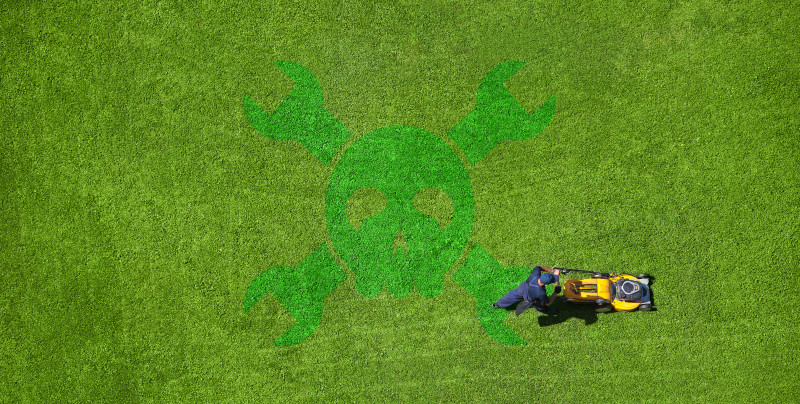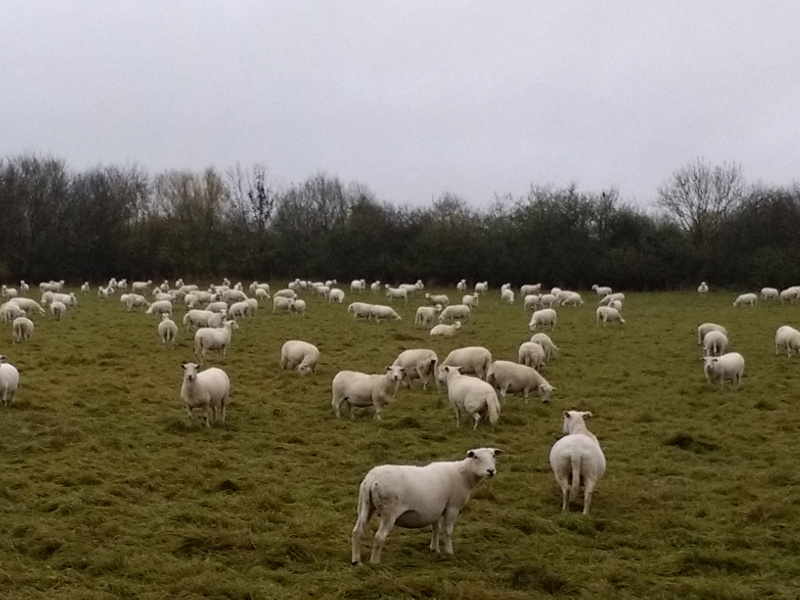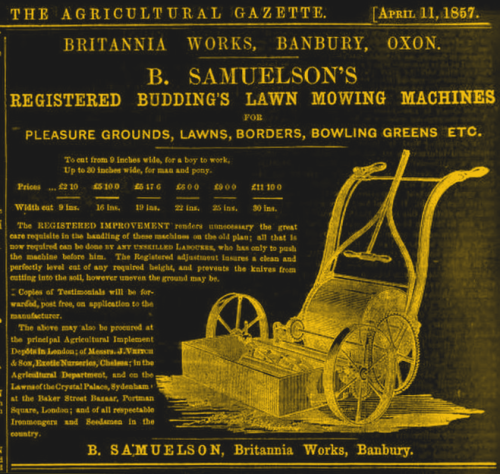
Well here we are, we’ve reached that time of year again at which our yearly ritual of resuscitating small internal combustion engines from their winter-induced morbidity is well under way. It’s lawn mowing season again, and a lot of us are spending our Saturday afternoons going up and down our little patches of grass courtesy of messers Briggs and Stratton.
Where this is being written, the trusty Honda mower’s deck has unexpectedly failed, so an agricultural field topper is performing stand-in duty for a while, and leaving us with more of the rough shag pile of a steeplechaser’s course than the smooth velvet of a cricket ground. Tea on the lawn will be a mite springier this year.When you think about it, there’s something ever so slightly odd about going to such effort over a patch of grass. Why do we do it? Because we like it? Because everyone else has one? Or simply because it’s less effort to fill the space with grass than it is to put something else there? It’s as if our little pockets of grassland have become one of those facets of our consumer culture that we never really think about, we just do.

If you consult the only history books worth reading, you’ll find that in Days Of Old there would have been a grassy area kept free of trees and other growth surrounding castles and other military installations, for defensive purposes. This can clearly be seen in contemporary films. As mediaeval castles slowly evolved over the centuries into aristocratic homes, so did the practice of surrounding them with close-cropped grassland.
The mowing would have been performed by animals, but the result would have been to retain something starting to resemble a rough lawn.When aristocratic homes ceased to have any military purpose, their gardens became an art form in themselves. Formal gardens took the lawn and incorporated it into their designs, maintaining it with legions of gardeners using hand tools. The lawn was thus an extreme status symbol; to have one you had to be in a position to employ people simply for the useless task of maintaining grass for pleasure.
So by the 19th century, combining the insatiable desire of the upwardly mobile Victorian middle class for status symbols with the seemingly limitless ingenuity of the engineers of the Industrial Revolution, it was inevitable that technology would democratise lawn ownership and set our civilisation on the slow but inexorable path to our current Briggs and Stratton servitude.
Lawnmowers

We have an engineer from Gloucestershire, England, [Edwin Budding], to thank for the first lawn mower. His 1830 rotating blade cylinder derived from shears used in the wool industry and driven through a gear train by a roller in contact with the ground as the operator pushed it is a design that has stood the test of time. The gears may have been replaced by a chain, and the whole machine may have been made much lighter, but you can still buy substantially similar mowers today.
[Edwin Budding] is remembered in the 21st century through a charity in his name, the [Budding] Foundation operates a horticultural equipment museum and works in advancing education and opportunities for young people. You might ask…
The post Something To Think About While You’re Mowing The Lawn appeared first on FeedBox.